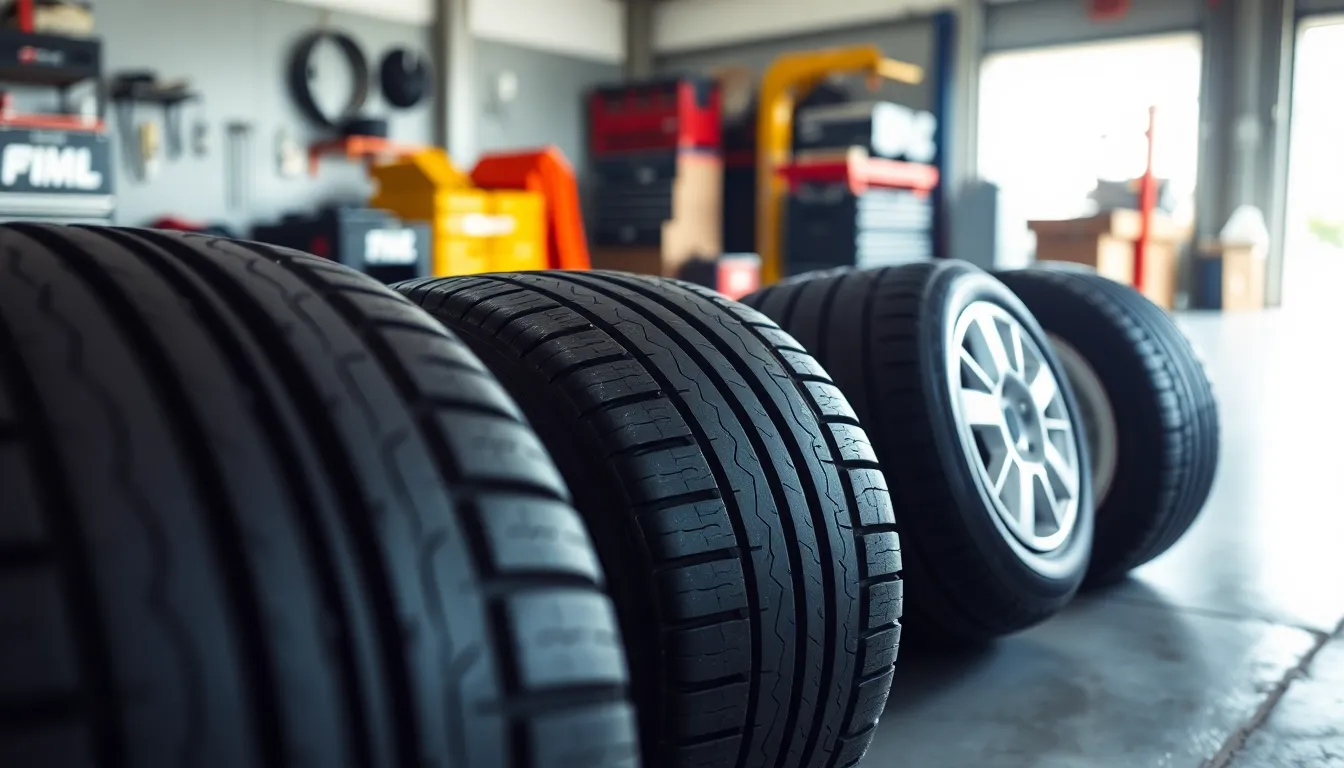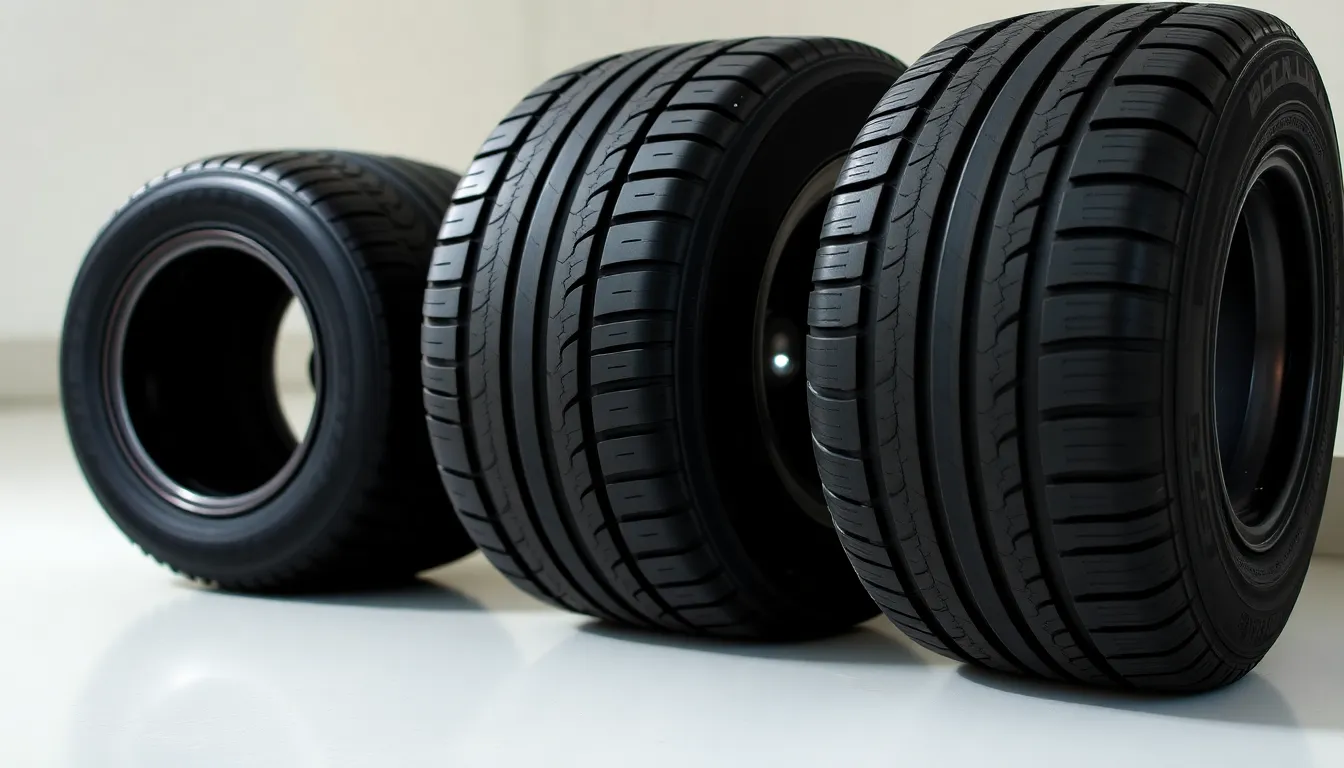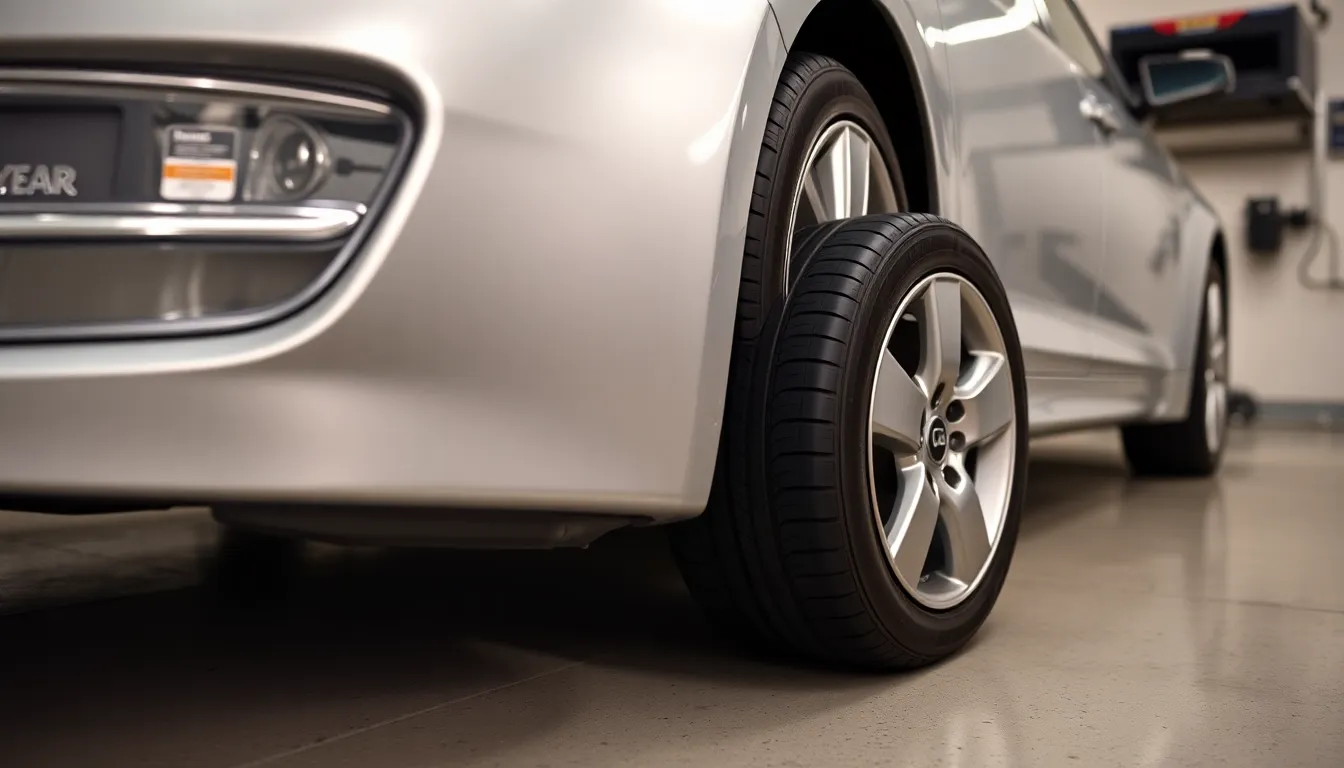When we’re shopping for replacement tires for our 2013 Kia Optima, understanding the correct tire size isn’t just important—it’s essential for our safety and vehicle performance. The wrong tire size can affect everything from fuel economy to handling, making it crucial that we get this decision right the first time.
We’ve all been there: standing in the tire shop feeling overwhelmed by numbers and letters that seem like a foreign language. The 2013 Kia Optima came with exact tire size configurations that were carefully engineered to optimize performance, comfort, and efficiency. Whether we’re replacing worn tires or upgrading for better performance, knowing these specifications saves us time and money.
Getting the right tire size for our Optima means we’ll maintain proper speedometer accuracy, preserve our vehicle’s handling characteristics, and ensure our investment lasts as long as possible. Let’s jump into everything we need to know about finding the perfect fit for our ride.
Understanding the 2013 Kia Optima Tire Size Specifications
The 2013 Kia Optima comes equipped with exact tire size configurations that vary depending on the trim level and wheel package. Standard models feature 215/60R16 tires, while higher trim levels use 225/45R18 specifications. These measurements represent critical dimensional data that directly affects your vehicle’s performance characteristics.
Each tire size designation contains three essential components that determine compatibility with your Optima. The first number indicates tire width in millimeters, with 215mm representing the standard width and 225mm indicating the wider performance option. Aspect ratio follows as the second measurement, showing sidewall height as a percentage of tire width.
| Trim Level | Tire Size | Wheel Diameter | Width (mm) | Aspect Ratio |
|---|---|---|---|---|
| LX Base | 215/60R16 | 16 inches | 215 | 60% |
| EX/SX | 225/45R18 | 18 inches | 225 | 45% |
Radial construction marks appear as the “R” designation in both tire specifications for the 2013 Kia Optima. This construction type provides enhanced durability and improved fuel efficiency compared to bias ply alternatives. The final number represents wheel diameter in inches, determining which wheel size accommodates each tire specification.
Performance characteristics change significantly between the two available tire sizes for your 2013 Optima. Larger 18-inch wheels with lower profile tires deliver enhanced cornering response and sportier handling dynamics. Smaller 16-inch configurations prioritize ride comfort and typically offer better fuel economy ratings.
Load index and speed rating complete the tire specification requirements for optimal 2013 Kia Optima performance. Most configurations use a 91 load index, supporting up to 1,356 pounds per tire. Speed ratings typically range from H (130 mph) to V (149 mph) depending on your exact tire selection and intended driving applications.
Factory Tire Size Options for the 2013 Kia Optima

Kia equipped the 2013 Optima with multiple tire configurations across different trim levels. Each configuration balances performance characteristics with exact driving needs.
Base Model Tire Size
LX Model: We find the entry level LX trim uses 205/65R16 tires as standard equipment. This configuration prioritizes fuel economy and ride comfort over sporty handling characteristics. The 205mm width provides adequate traction for daily driving while the 65 aspect ratio delivers a taller sidewall that absorbs road imperfections effectively.
| Specification | Value |
|---|---|
| Tire Width | 205mm |
| Aspect Ratio | 65% |
| Wheel Diameter | 16 inches |
| Construction Type | Radial |
SX Turbo Model Tire Size
SX and SX Turbo Models: Performance oriented trims feature 225/45R18 tires that complement the turbocharged engine’s capabilities. The wider 225mm footprint increases cornering grip while the lower 45 aspect ratio reduces sidewall flex during aggressive driving maneuvers. These larger 18 inch wheels enhance the vehicle’s sporty appearance and improve steering response precision.
Hybrid and EX Models: Additional configurations include 215/55R17 tires for certain EX and Hybrid variants, offering a middle ground between comfort and performance. Hybrid models also retain the option for 205/65R16 sizing when prioritizing maximum fuel efficiency. EX Turbo versions can accommodate both 215/55R17 and 225/45R18 sizes depending on exact equipment packages.
Check the tire sidewall markings or driver’s side door jamb placard to verify your exact 2013 Optima’s factory tire size before making replacements.
Tire Size Breakdown and What the Numbers Mean

Understanding tire size designations helps us make informed decisions about 2013 Kia Optima tire replacements. Each tire size follows a standardized format that communicates essential specifications for proper fitment and performance.
Decoding the Tire Size Format
The 2013 Kia Optima tire sizes use a three-part numbering system that identifies key measurements. We can break down the 225/45R18 format found on SX and SX Limited models to understand each component.
225 represents the tire width measured in millimeters from sidewall to sidewall. This measurement affects the tire’s contact patch with the road surface and influences handling characteristics.
45 indicates the aspect ratio expressed as a percentage of the tire’s width. A 45 aspect ratio means the sidewall height equals 45% of the tire’s 225mm width, creating a lower profile tire that enhances steering response.
R designates radial construction where tire cords run perpendicular to the direction of travel. Radial tires offer improved fuel efficiency and longer tread life compared to bias-ply alternatives.
18 specifies the rim diameter in inches that the tire fits. The 2013 Kia Optima uses 16-inch, 17-inch, and 18-inch wheel sizes depending on the trim level.
Performance Implications of Different Sizes
Larger tire sizes like the 225/45R18 configuration provide enhanced handling and traction capabilities. These sportier dimensions reduce sidewall flex during cornering maneuvers and improve steering precision for SX and EX Turbo models.
Smaller tire sizes such as the 205/65R16 option prioritize fuel efficiency and ride comfort. The taller sidewall absorbs road imperfections more effectively while the narrower width reduces rolling resistance for improved gas mileage in LX and Hybrid variants.
Mid-range options like the 215/55R17 size balance performance and comfort characteristics. EX models equipped with this configuration experience moderate handling improvements while maintaining reasonable fuel economy and ride quality.
| Tire Size | Width (mm) | Aspect Ratio | Rim Diameter (inches) | Primary Benefit |
|---|---|---|---|---|
| 205/65R16 | 205 | 65 | 16 | Fuel efficiency |
| 215/55R17 | 215 | 55 | 17 | Balanced performance |
| 225/45R18 | 225 | 45 | 18 | Enhanced handling |
Compatible Tire Size Alternatives

We understand that 2013 Kia Optima owners sometimes want flexibility beyond their factory tire specifications. Different trim levels offer multiple compatible tire size options that maintain vehicle performance and safety standards.
Plus Sizing Options
Base LX and Hybrid LX models originally equipped with 205/65R16 tires can upgrade to 215/55R17 or 225/45R18 configurations. These upgrades require matching the vehicle’s 5×114.3mm bolt pattern and maintaining proper offset between ET 39–48mm for safe fitment.
EX and EX Turbo models typically use 215/55R17 or 225/45R18 sizes depending on the exact option package. Owners can interchange between these two sizes since both maintain similar overall diameter measurements.
SX and SX Limited trims come standard with 225/45R18 tires but can accommodate the 215/55R17 size for different performance characteristics. Plus sizing modifications must keep the overall diameter within 3% of the original specification to prevent speedometer inaccuracy and ensure proper clearance.
European diesel variants follow the same sizing principles as their gasoline counterparts, with base models using 205/65R16 and higher trims supporting larger diameter options. Regional variations may offer different wheel and tire packages based on local market preferences.
Winter Tire Considerations
Optimal winter performance typically requires matching the original equipment tire size for each exact trim level. Base trim owners benefit from staying with 205/65R16 dimensions during winter months for consistent vehicle dynamics.
Narrower tire profiles often provide superior winter traction compared to wider summer configurations. Many owners choose to downsize from 225/45R18 to 215/55R17 or even 205/65R16 on smaller diameter wheels for enhanced snow and slush performance.
Steel wheel packages in 16-inch diameter offer practical winter answers for all trim levels. These packages protect expensive alloy wheels from road salt corrosion while simplifying seasonal tire changes.
Winter tire installations require confirming the original size specification on the driver’s side door jamb placard before purchase. Maintaining proper load index and speed ratings ensures safe winter driving performance across all weather conditions.
Recommended Tire Brands and Models

We’ve compiled proven tire brands and models that deliver optimal performance for your 2013 Kia Optima across different driving conditions. These recommendations match the exact size requirements for each trim level.
All-Season Tire Options
Goodyear Assurance All-Season provides a smooth ride experience with reliable traction across multiple weather conditions. This tire excels in delivering consistent performance for daily commuting and highway driving.
Michelin Premier LTX stands out for its exceptional durability and remarkably quiet ride quality. Drivers experience enhanced comfort during long trips while maintaining excellent wet weather grip.
Continental AllSeasonContact LS delivers superior grip performance on both wet and dry road surfaces. The tire’s advanced compound technology ensures consistent handling characteristics throughout various seasonal conditions.
These all-season options work exceptionally well with the 205/65R16 and 215/55R17 configurations found on LX and Hybrid models. Each brand maintains the proper load index ratings while delivering fuel-efficient performance.
Performance Tire Choices
Michelin Pilot Sport A/S 3 offers superior handling capabilities with enhanced performance characteristics for spirited driving. This tire provides precise steering response while maintaining all-season versatility.
Goodyear Eagle F1 Asymmetric 3 delivers exceptional dry and wet handling performance through its advanced tread design. Cornering stability remains consistent even during aggressive driving maneuvers.
Pirelli Cinturato P7 All Season Plus combines high-performance capabilities with comprehensive all-season functionality. The tire balances sporty handling with year-round usability for demanding drivers.
These performance-oriented tires complement the 225/45R18 wheels found on SX and SX Limited models perfectly. Each option maintains the required speed ratings while improving the sporty characteristics that make these trim levels distinctive.
Tire Maintenance and Replacement Tips

Proper maintenance extends tire life and optimizes performance for your 2013 Kia Optima. Regular inspections and timely replacements ensure safety across all trim configurations.
When to Replace Your Tires
Tread depth serves as the primary indicator for tire replacement on your 2013 Kia Optima. Replace tires when tread depth falls below 2/32 inch using a penny test or tread depth gauge for accurate measurement.
Sidewall cracks and damage require immediate attention regardless of tread depth remaining. Inspect regularly for bulges, cuts, or weathering that compromise tire integrity and replace damaged tires promptly.
Age becomes critical even when tires appear visually acceptable after extended use. Replace tires every six to ten years depending on usage patterns and storage conditions, as rubber compounds deteriorate over time.
Uneven wear patterns across the tire surface indicate alignment issues or improper inflation. Monitor for irregular tread wear that suggests mechanical problems requiring both tire replacement and vehicle service.
Proper Tire Pressure Guidelines
Owner’s manual specifications provide the most accurate tire pressure recommendations for your exact 2013 Kia Optima trim level. Consult the manual for precise PSI values that match your factory tire size configuration.
Tire information placard displays correct pressure ratings on the driver’s side doorjamb or fuel door location. Check this placard rather than the tire sidewall maximum pressure for proper inflation levels.
Monthly pressure checks maintain optimal performance and fuel efficiency across all driving conditions. Use a quality tire pressure gauge before long trips and when tires are cold for most accurate readings.
Temperature fluctuations affect tire pressure by approximately 1 PSI per 10-degree temperature change. Adjust pressure seasonally and monitor more frequently during extreme weather transitions.
Rotation schedules every 5,000 to 8,000 miles ensure even tread wear across all four tires. Balance tires simultaneously to prevent vibration and extend overall tire life for your 2013 Kia Optima.
Cost Considerations for 2013 Kia Optima Tires

Tire costs for the 2013 Kia Optima vary significantly based on size configuration and trim level requirements. Smaller 205/65R16 tires found on LX and Hybrid models typically cost $80 to $150 per tire from standard manufacturers. Mid-range 215/55R17 options for EX and certain Hybrid configurations run between $120 to $200 per tire. Performance-focused 225/45R18 tires required for SX and SX Limited models command premium pricing from $150 to $300 per tire.
Premium tire brands affect pricing substantially across all size categories. Michelin offers up to $80 instant savings on select models for 2013 Kia Optima configurations. BFGoodrich provides up to $30 instant savings on compatible tire sizes. Pirelli delivered up to $80 instant savings on select models through May 19, 2025 promotions.
Brand selection impacts long-term value beyond initial purchase price. Continental, Goodyear, and Bridgestone offer competitive pricing for standard all-season options. Michelin and Pirelli command higher prices but deliver extended tread life and enhanced performance characteristics. Budget tire brands provide lower upfront costs but may require more frequent replacement cycles.
Seasonal tire strategies affect annual tire budgets for Optima owners. All-season tires eliminate the need for separate winter sets but may compromise performance in extreme conditions. Dedicated winter tire purchases add $400 to $800 annually for complete sets. Summer performance tires maximize warm weather grip but require storage answers and seasonal mounting costs.
Installation and service costs add $20 to $40 per tire at most retailers. Balancing services typically cost $15 to $25 per wheel during installation. Alignment checks run $80 to $120 and may be necessary when changing tire sizes. Road hazard warranties add $15 to $30 per tire but protect against unexpected replacement costs.
Discount retailers and online vendors offer competitive pricing alternatives to dealership service departments. Costco, Sam’s Club, and Discount Tire frequently run manufacturer rebate programs. Online retailers like Tire Rack provide detailed fitment guides and customer reviews for informed purchasing decisions. Local tire shops often match competitor pricing while providing personalized service.
Bulk purchase timing affects overall tire investment for 2013 Kia Optima owners. Replacing all four tires simultaneously ensures uniform tread depth and optimal performance. Seasonal sales events during spring and fall offer important savings opportunities. End-of-model-year clearances provide discounted pricing on previous year tire inventories.
Conclusion
We’ve covered everything you need to know about finding the right tires for your 2013 Kia Optima. From understanding size designations to exploring compatible alternatives your vehicle’s performance depends on making informed tire choices.
Remember that proper maintenance extends beyond just selecting the correct size. Regular pressure checks tire rotations and timely replacements ensure you’ll get the most value from your investment while keeping your Optima running safely.
Whether you’re driving the base LX with 205/65R16 tires or the performance-oriented SX with 225/45R18 wheels the right tire selection makes all the difference. Your driving experience fuel economy and safety all benefit when you choose wisely and maintain properly.
Frequently Asked Questions
What tire size does a 2013 Kia Optima use?
The 2013 Kia Optima uses different tire sizes depending on the trim level. Base LX models typically use 205/65R16 tires, EX and Hybrid variants often have 215/55R17 tires, while performance SX and SX Turbo models come with 225/45R18 tires. Always check your driver’s side door jamb placard or tire sidewall markings to confirm your specific vehicle’s factory tire size.
Can I use different tire sizes on my 2013 Kia Optima?
Yes, you can use compatible alternative sizes as long as you maintain the overall diameter within 3% of the original specification. For example, LX models can upgrade to 215/55R17 or 225/45R18 configurations. EX models can interchange between 215/55R17 and 225/45R18 sizes. Always ensure proper load index and speed ratings are maintained for safety.
What’s the difference between 205/65R16 and 225/45R18 tires?
The 205/65R16 tires prioritize fuel economy and ride comfort with a taller sidewall, while 225/45R18 tires offer sportier handling and enhanced cornering grip with a lower profile. The larger 18-inch wheels provide better steering response but may result in a firmer ride. Choose based on your driving preferences and performance needs.
How much do 2013 Kia Optima tires cost?
Tire costs vary by size and brand. Smaller 205/65R16 tires typically range from $80-$150 each, mid-range 215/55R17 options cost $120-$200, while performance 225/45R18 tires range from $150-$300. Premium brands like Michelin offer longer lifespan but higher upfront costs. Installation typically adds $20-$40 per tire.
What are the best tire brands for a 2013 Kia Optima?
For all-season performance, consider Goodyear Assurance All-Season, Michelin Premier LTX, or Continental AllSeasonContact LS. For performance applications with 225/45R18 wheels, Michelin Pilot Sport A/S 3, Goodyear Eagle F1 Asymmetric 3, or Pirelli Cinturato P7 All Season Plus are excellent choices. All maintain required load index and speed ratings.
When should I replace my 2013 Kia Optima tires?
Replace tires when tread depth reaches 2/32 inch or less. Use the penny test or tread depth gauge for accurate measurement. Also replace tires showing sidewall damage, age-related cracking (typically after 6-10 years), or uneven wear patterns indicating alignment issues. Regular monthly inspections help identify replacement needs early.
Can I downsize tires for winter driving?
Yes, downsizing can improve winter traction. You can go from 225/45R18 to 215/55R17 or 205/65R16 for better snow performance. Narrower tires often provide superior traction in snow and slush. Consider steel wheel packages in 16-inch diameter to protect alloy wheels and simplify seasonal tire changes while maintaining proper specifications.
How often should I rotate tires on my 2013 Kia Optima?
Rotate tires every 5,000 to 8,000 miles to ensure even tread wear and extend overall tire life. Regular rotation helps maximize your tire investment and maintains consistent handling characteristics. Follow your owner’s manual for the specific rotation pattern recommended for your vehicle’s drivetrain configuration.










